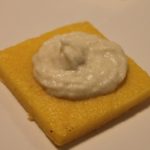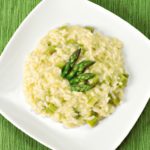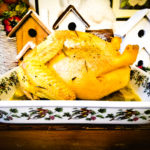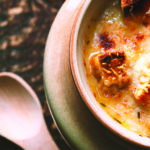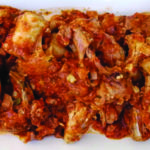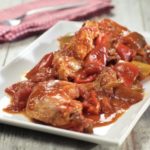APULIAN CAPONATA
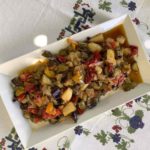
This Apulian caponata is a version of this one of Sicily’s essential dishes. It is a vegetarian eggplant stew–more like a relish, really–made of eggplant, onions, bell pepper, celery and tomatoes with briny olives and capers.
There are variations of this tasty eggplant dish. Most of caponatas are spiked with vinegar or raisins.
This version was given to me by a dear friend who lives in Prato, but she owns her Apulian origins a fantastic touch with veggies. This ratatouille is baked, and much lighter then the original version with fried veggies.
The addition of Juniper berries and bay leaves to caponata confers it a very unusual taste which, surprisingly enough (usually these herbs are used in game or meat cooking), melts perfectly with this tasty deli.
It is best the next day, so try to make it ahead and store it in the fridge in a tight-lid mason jar. Bring it to room temperature before serving.
Prep Time: 20 mins | Cooking Time: 60 mins | Total Time: 1 hour + 20 mins minutes | Yield: Makes 8 servings.
Ingredients
- 4 medium yellow onions
- 1 yellow bell pepper
- 1 red bell peppers
- 3 medium potatoes
- 1 large eggplant
- 125 ml (½ cup) EVO oil
- 10 bay leaves
- 1 tablespoon black peppercorns
- 1 tablespoon Juniper berries
- Sea salt
Instructions
Cut the eggplant in chunks, sprinkle with salt and let drain in a colander.
Halve and de–seed the peppers, then roughly cut into large chunks. Do the same with potatoes and zucchini.
Heat oven to 180C/170C (350 F) fan.
Cover two shallow roasting pans with parchment paper, pour in the vegetables except the eggplant, and season with salt.
With a clean tea towel, squeeze the eggplant chunks and add them to the other vegetables.
Spoon two-thirds juniper berries, peppercorns and olive oil and bay leaves (roughly broken into two halves) into the vegetable mixture, toss together, then roast for 40 minutes.
While vegetables are baking, cut the onions in two halves and then into strips.
Put them in a bowl, season with salt and the remaining herbs and olive oil.
After the vegetables have cooked for 40’, add the onion, mix and let it cook for 20’, or until all the vegetables are soft.

